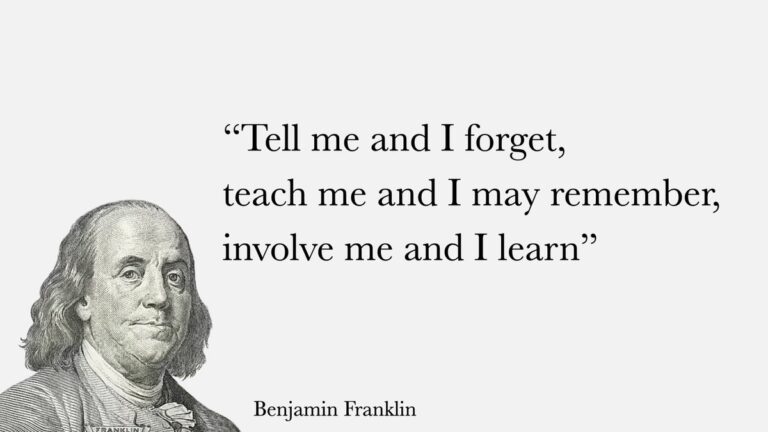Project-Based Learning (PBL) has become one of the most effective instructional models for helping students develop real-world skills, creativity, and deep understanding.
As online K-12 education continues to expand globally, many virtual schools have found that PBL is not only compatible with online learning, but in many ways better implemented in digital environments than in traditional classrooms.
We will explain what project-based learning is, its key benefits, and why online schools are uniquely well-positioned to deliver outstanding PBL experiences for students.
What Is Project-Based Learning?
Project-Based Learning (PBL) is a teaching method where students learn by engaging in meaningful projects that require research, collaboration, critical thinking, and problem-solving.
Instead of memorizing content for a test, students explore authentic challenges and produce real, shareable outcomes.
Key characteristics of PBL include:
- A driving question or real-world problem: Each project begins with a meaningful challenge, such as “How can we reduce waste in our community?” or “What makes a healthy ecosystem?”;
- Student-led inquiry and research: Learners take responsibility for gathering information, evaluating sources, and making decisions;
- Hands-on creation: Projects result in a tangible product: a presentation, video, model, experiment, business plan, website, or other creative output;
- Collaboration and reflection: Students work individually or in groups and regularly reflect on their learning process;
- Public presentation or demonstration of learning: Instead of taking a test, students share their final work with teachers, peers, parents, or an online audience.
Project-based learning makes students learn by being active creators and problem-solvers rather than pure memorizing of facts.
Instead of learning from a textbook and memorizing information, you are required to create something using the knowledge you have.
The reason this type of learning is effective is because you need a thorough understanding of the material in order to use it practically.
An Example of Project-Based Learning
Let’s say you are studying biology and cells are the topic.
You begin by learning the basics:
- What are cells?
- What’s the difference between plant and animal cells?
- What are organelles, and what are their jobs? (nucleus, mitochondria, cell membrane, etc.)
Then, you build a cell model using:
- Physical materials (e.g., clay, candy, cardboard, beads, recycled materials) or;
- Digital tools (e.g., Google Drawings, Canva, Tinkercad, or a virtual cell simulator).
You then label each organelle and write (or record) a simple explanation of what it does.
Example:
- Nucleus → The “control center” of the cell;
- Mitochondria → Provide energy for the cell;
- Cell membrane → Protects the cell and controls what goes in and out;
This helps you connect structure with function. Having a more comprehensive understanding of the relations of concepts helps you better understand the concepts themselves.
After that, you share your project with the class in the classroom, during a live online session or upload it to a digital classroom.
You then answer simple questions like:
- Which organelle was most interesting?
- How do the organelles work together?
- What would happen if one organelle stopped working?
The Benjamin Franklin quote at the beginning describes project-based learning perfectly. Only by getting involved in the topic do you really learn about it.
You cannot learn how to ride a bike or how to drive a car without taking the steering wheel into your hands.
Why Project-Based Learning Works: Key Benefits
1. Deeper Understanding and Retention
You remember concepts better when you apply them in real situations.
PBL connects academic theory to practical use, strengthening long-term retention and comprehension.
2. Development of Future-Ready Skills
PBL nurtures essential skills, such as:
- Critical thinking and analysis: When you do projects you know what works and what does not. This gives you the ability to critically analyze the information and logically understand why the information is correct;
- Creativity and innovation: Apart from finding ways to represent information on the topic visually, you also get new ideas in which ways you can do it;
- Collaboration: Sometimes, these projects are too large to be done by one person and sometimes you need to learn how to offer and accept help;
- Time management – projects can require a lot of time to finish and you need to know how to efficiently organize your own time;
- Research skills: Doing a project requires prior knowledge. You practice putting together necessary information that will help you in your presentation;
- Communication and presentation skills: A project means nothing if it is not presented in a clear and concise way. You learn skills of presentation by trying to explain what you learned in the simplest way possible
These competencies are valuable far beyond the classroom.
3. Increased Motivation and Engagement
Students often feel more invested when they have ownership over their projects.
Instead of passive listening, learners actively participate and in many cases, have fun.
4. Personalized Learning Experience
Because projects can be adapted to students’ interests, strengths, and learning styles, PBL naturally supports personalized learning.
5. Real-World Application
Many projects simulate real professional tasks: designing solutions, conducting experiments, building digital products, or presenting findings. This helps students understand why their education matters.
How Online K-12 Schools Implement PBL Better Than Traditional Schools
While project-based learning can be used in any environment, online schools often provide a more flexible, personalized, and resource-rich ecosystem for successful PBL.
Below are the main reasons virtual schools tend to excel in implementing project-based learning:
1. Flexible Schedules That Support Deep Work
Traditional classrooms are restricted by 45-minute periods, bells, and pacing guides.
Online K-12 schools offer flexibility so students can:
- Spend more time on complex projects;
- Work at their own pace;
- Schedule research, interviews, or experiments without classroom limitations;
- Revisit lessons as needed using recorded materials.
This structure allows students to dive deeper into their work, resulting in higher-quality projects.
2. Access to Global Digital Resources
Online learners use:
- Virtual labs;
- Interactive simulations;
- Digital libraries;
- Research databases;
- Multimedia creation tools;
- Online collaboration platforms.
These tools expand project possibilities far beyond what a typical physical classroom can offer.
3. Stronger Individual Support from Teachers
Online teachers often take on a facilitator or mentor role, guiding each student through their project.
With smaller teacher-student ratios and one-on-one check-ins, online schools can:
- Provide personalized feedback;
- Track each student’s progress;
- Help struggling learners early;
- Offer enrichment opportunities to advanced students.
4. Seamless Collaboration Across Borders
Online schools allow students from different countries and backgrounds to work together.
Through platforms like:
- Google Workspace;
- MS Teams;
- Virtual classrooms;
- Shared documents;
- Group or individual classes.
Students can collaborate regardless of location or time zone. This mirrors real workplace collaboration more closely than traditional group work.
5. Technology-Enhanced Creativity
Online learning naturally integrates digital creation tools.
Students can design:
- Videos;
- Websites;
- Digital presentations;
- Animated explanations;
- Online portfolios;
- 3D models;
- Podcasts.
This is even more common in elective subjects, where students can choose a wide range of courses that fit their personal interests that also benefit the credit score.
Elective subjects are almost entirely project-based, especially the ones such as programming, photography and art.
Online Labs: The Best Project-Based Learning Tool in Online Schools
Apart from projects that are a part of the regular curriculum, the biggest edge online K-12 schools have when it comes to project based learning are online labs.
These videogame-like simulations allow students to simulate real events and practices.
Instead of learning information directly from a textbook and walls of text, students have the opportunity to study the consequences by directly causing them.
Our online school, EduWW, integrates Phet Interactive Simulations to our platform where our students can learn physics, biology and chemistry in a fun and engaging way.
Below are examples from Biology, Physics, and Chemistry demonstrating how virtual simulations enhance PBL.
Biology: Exploring Ecosystems Through Simulation
In online Biology labs, students can enter videogame-like ecosystem simulations that demonstrate how predator–prey dynamics work in nature. They can manipulate:
- The number of rabbits (prey);
- The number of wolves (predators);
- Genetic traits such as fur color;
- Environmental conditions.

By adjusting these variables, students observe how populations survive or decline and what factors influence biodiversity.
This dynamic environment supports project-based learning by enabling students to:
- Form hypotheses about survival strategies;
- Test how genetic or environmental changes impact populations;
- Collect data on species interactions;
- Present findings in the form of a report, model, or video.
Because ecosystems are complex and ever-changing, virtual labs allow students to explore far more scenarios than would be possible in a traditional classroom.
Physics: Mastering Projectile Motion Through Interactive Challenges
In online Physics simulations, students often work with cannon-aiming scenarios that require them to apply principles of projectile motion. They must account for:
- The angle of the cannon;
- Initial velocity;
- Range;
- Gravitational drop over distance.

To hit the target successfully, students perform calculations, test their predictions, and refine their aim.
This becomes an ideal PBL activity because students are not simply following a formula, they are:
- Solving a real-world style challenge;
- Analyzing how changing one variable affects the outcome;
- Designing strategies to improve accuracy;
- Presenting their mathematical reasoning and results.
Such simulations foster deep conceptual understanding while making Physics more engaging and practical.
Chemistry: Investigating States of Matter and Temperature Effects
In virtual Chemistry labs, students explore how atoms and molecules behave under different conditions. Inside a digital container, they can manipulate:
- Temperature levels;
- Types of particles (oxygen, neon, argon, water, etc.);
- States of matter (solid, liquid, gas).

As they change the temperature, students see how particles speed up, slow down, collide, spread out, or condense. This allows them to design projects around questions such as:
- How does temperature influence molecular motion?
- What factors change a substance from solid to liquid to gas?
- How do different gases react under the same conditions?
Students can then gather evidence, create charts, compare substances, and present their findings as a scientific report or digital presentation.
Why Virtual Labs Enhance Project-Based Learning
Virtual simulations align perfectly with PBL because they allow students to:
- Experiment freely without safety hazards;
- Test multiple scenarios quickly and efficiently;
- Collect accurate data for their projects;
- Learn through exploration, not memorization;
- Connect scientific theory with real outcomes.
Conclusion: Online Schools Are Leading the Future of Project-Based Learning
Project-based learning is more than a teaching method—it is a powerful approach that prepares students for success in an increasingly complex world. While PBL can be used anywhere, online K-12 schools often provide the strongest environment for it to thrive.
With flexible schedules, advanced digital tools, personalized mentorship, and global collaboration opportunities, virtual schools offer students an unparalleled project-based learning experience.
As online education continues to evolve, PBL will remain one of its biggest strengths and a key driver of student success.



